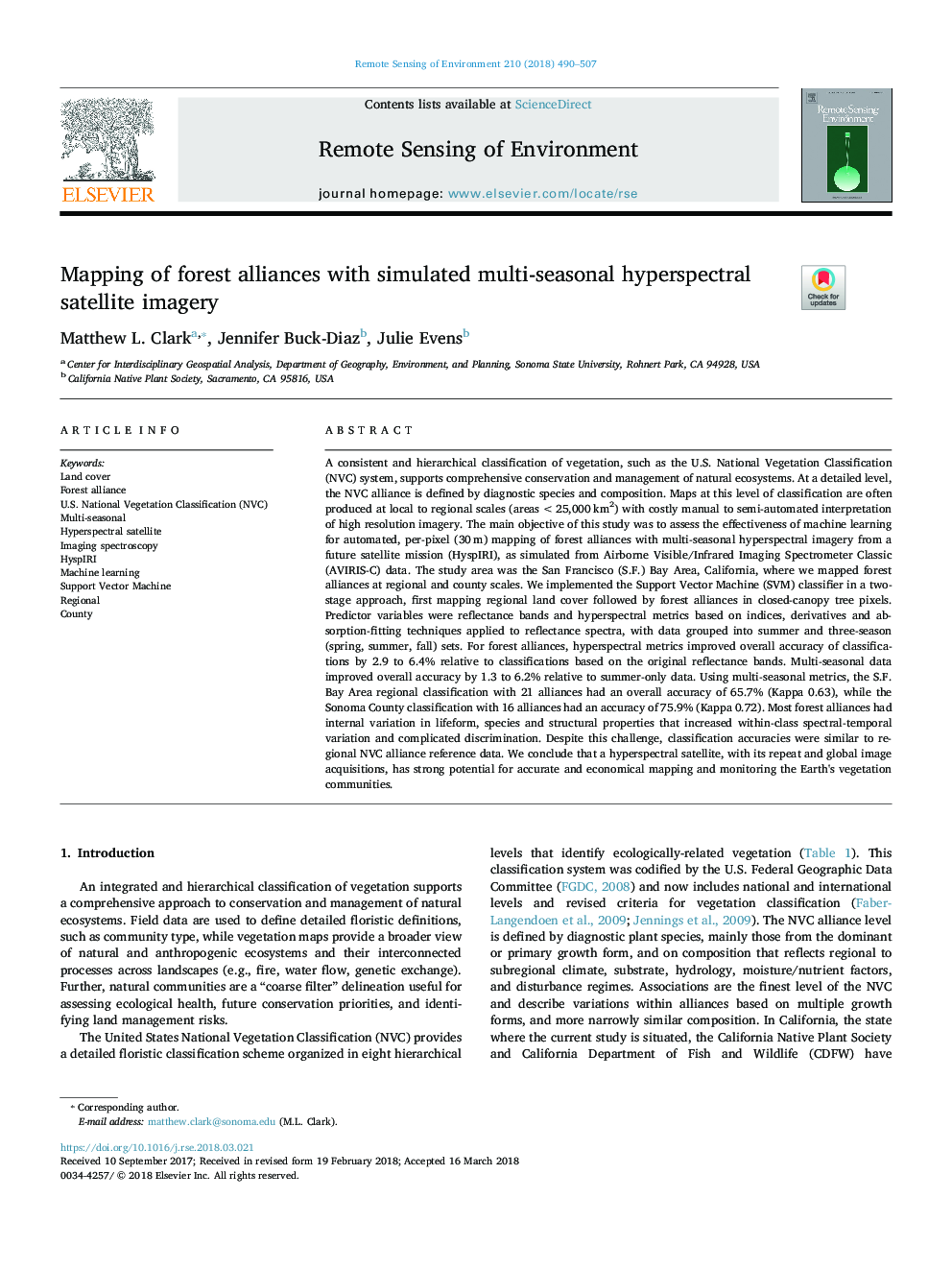| کد مقاله | کد نشریه | سال انتشار | مقاله انگلیسی | نسخه تمام متن |
|---|---|---|---|---|
| 8866616 | 1621190 | 2018 | 18 صفحه PDF | دانلود رایگان |
عنوان انگلیسی مقاله ISI
Mapping of forest alliances with simulated multi-seasonal hyperspectral satellite imagery
ترجمه فارسی عنوان
نقشه برداری از اتحاد جنگل با تصاویر ماهواره ای هیپرتسفر چند فصلی شبیه سازی شده
دانلود مقاله + سفارش ترجمه
دانلود مقاله ISI انگلیسی
رایگان برای ایرانیان
کلمات کلیدی
موضوعات مرتبط
مهندسی و علوم پایه
علوم زمین و سیارات
کامپیوتر در علوم زمین
چکیده انگلیسی
A consistent and hierarchical classification of vegetation, such as the U.S. National Vegetation Classification (NVC) system, supports comprehensive conservation and management of natural ecosystems. At a detailed level, the NVC alliance is defined by diagnostic species and composition. Maps at this level of classification are often produced at local to regional scales (areas <25,000â¯km2) with costly manual to semi-automated interpretation of high resolution imagery. The main objective of this study was to assess the effectiveness of machine learning for automated, per-pixel (30â¯m) mapping of forest alliances with multi-seasonal hyperspectral imagery from a future satellite mission (HyspIRI), as simulated from Airborne Visible/Infrared Imaging Spectrometer Classic (AVIRIS-C) data. The study area was the San Francisco (S.F.) Bay Area, California, where we mapped forest alliances at regional and county scales. We implemented the Support Vector Machine (SVM) classifier in a two-stage approach, first mapping regional land cover followed by forest alliances in closed-canopy tree pixels. Predictor variables were reflectance bands and hyperspectral metrics based on indices, derivatives and absorption-fitting techniques applied to reflectance spectra, with data grouped into summer and three-season (spring, summer, fall) sets. For forest alliances, hyperspectral metrics improved overall accuracy of classifications by 2.9 to 6.4% relative to classifications based on the original reflectance bands. Multi-seasonal data improved overall accuracy by 1.3 to 6.2% relative to summer-only data. Using multi-seasonal metrics, the S.F. Bay Area regional classification with 21 alliances had an overall accuracy of 65.7% (Kappa 0.63), while the Sonoma County classification with 16 alliances had an accuracy of 75.9% (Kappa 0.72). Most forest alliances had internal variation in lifeform, species and structural properties that increased within-class spectral-temporal variation and complicated discrimination. Despite this challenge, classification accuracies were similar to regional NVC alliance reference data. We conclude that a hyperspectral satellite, with its repeat and global image acquisitions, has strong potential for accurate and economical mapping and monitoring the Earth's vegetation communities.
ناشر
Database: Elsevier - ScienceDirect (ساینس دایرکت)
Journal: Remote Sensing of Environment - Volume 210, 1 June 2018, Pages 490-507
Journal: Remote Sensing of Environment - Volume 210, 1 June 2018, Pages 490-507
نویسندگان
Matthew L. Clark, Jennifer Buck-Diaz, Julie Evens,
